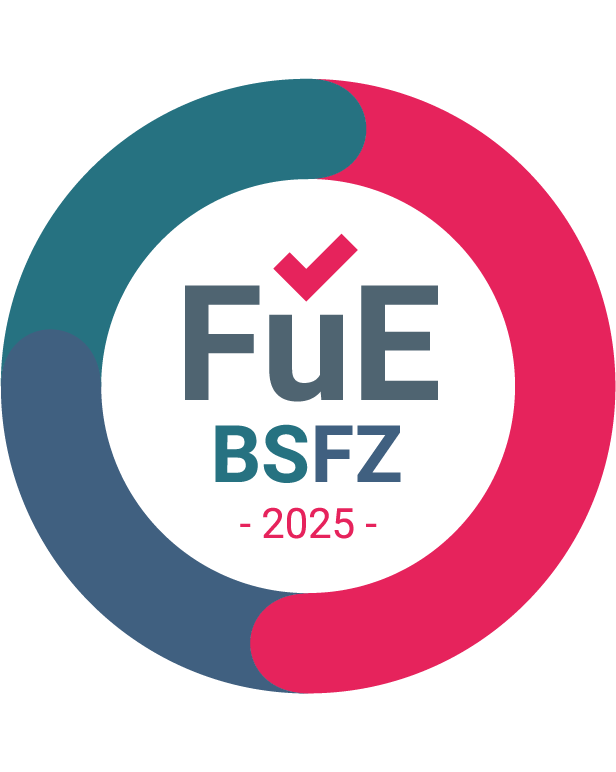Global competitive dynamics, rising cost pressures, and ambitious digitalization goals are posing major challenges for procurement and supply chain teams. The key to well-informed decisions often lies hidden – in the data. But what role do data really play in digitalization projects within procurement, and why might they be the most crucial success factor? In the following, we explore why data are considered the “hidden champion” of industry – and highlight the risks that arise from inaccurate or incomplete information.
In modern industry, success in procurement and supply chain strategies is no longer determined solely by price, but increasingly by the quality of the underlying data. Data-driven decisions can provide procurement organizations with a genuine competitive advantage. The prerequisite: a clean data foundation. However, reality often looks different. A study by Precisely & Drexel University shows that 66% of respondents rate the quality of their corporate data as “average,” “low,” or “very low.” This is alarming and at the same time, a huge opportunity. A clean data foundation is the often underestimated lever that determines whether digitalization, automation, and efficiency improvements in procurement truly succeed. Those who understand, structure, and connect their data create the foundation for sound decision-making, transparent supply chains, and strategic procurement management.
Why procurement data are the key success factor in digitalization projects Many procurement organizations today face the same challenge: despite modern tools, ERP systems, and BI solutions, transparency is still lacking. The reason rarely lies in the technology itself, but rather in the data. Fragmented, incomplete, or inconsistent information prevents digital solutions from reaching their full potential. Duplicate supplier records, inconsistent material master data, or non-comparable prices mean that even the best software cannot deliver reliable results.
The real issue is that data are still not recognized as a strategic asset in many companies. In meetings of diverse, interdisciplinary project teams and so-called “task forces,” discussions revolve around systems, processes, and interfaces but rarely around data quality, even though it forms the foundation of every successful digitalization effort. Yet the trend is moving in the opposite direction: many companies operate dozens of ERP systems that hardly communicate with each other. However, as long as the underlying data are not sound, no integration can truly work. Those who do not understand their data cannot connect or leverage them effectively and thus miss out on enormous potential in procurement.
The greatest challenges in procurement 2025 The demands on procurement are continuously increasing and the pace keeps accelerating. Global crises, volatile markets, and rising cost pressures make it more essential than ever to base decisions on reliable data. Especially in this dynamic environment, it becomes clear that procurement faces three key challenges that will decisively shape its performance.
The first challenge lies in the lack of data harmonization and integration. Without standardized structures, there is no clear overview of suppliers, spending, and savings potential. Different data formats, decentralized systems, and inconsistent maintenance practices lead to contradictory results and make it difficult to compare figures and processes. The result: inefficient workflows, a lack of transparency, and limited room for maneuver. Companies lose valuable time preparing information instead of using it strategically for decision-making.
Added to this is increasing market volatility and the threat of external shocks. Geopolitical crises, raw material shortages, or sudden price fluctuations – developments such as trade wars have made it clear how crucial real-time data and comprehensive market transparency are. Only those who link internal procurement data with external information on markets, prices, and risks can respond to changes early and take strategic countermeasures. Companies that fail to make these connections risk missing opportunities or overlooking costly risks.
The third challenge concerns the role of procurement itself: many departments still operate on an operational rather than a strategic level. Poor data quality prevents procurement from fulfilling its function as a strategic partner within the company. Without reliable information, it remains a reactive order processor instead of proactively identifying and realizing savings opportunities. Consistent data integration is the key to enabling procurement to make data-driven decisions and thus create real value for the business.
These three aspects make one thing clear: the core problem is not the tools being used, but the quality and interconnectedness of the data itself. Only those who harmonize, structure, and intelligently connect their data will be able to meet the growing demands on procurement in 2025, manage risks early, and fully seize strategic opportunities.
Step by step toward clean procurement data The path to high-quality, reliable procurement data is not a sprint – it’s a continuous, structured process. Companies that systematically improve their data quality lay the foundation for well-informed decisions, transparent processes, and long-term success. High-quality data are not just an operational tool, but a strategic asset that turns procurement into a true value driver.
The first step begins at the source: standardized data entry. Data quality doesn’t happen automatically, it only emerges when all employees capture information according to the same standards. This means clear field definitions, mandatory input formats, and ideally, automated validation mechanisms. Only in this way can typical errors be avoided such as duplicate supplier IDs, incorrect units of measure, or free-text entries instead of predefined fields. Standardized entry ensures that information is consistent, comparable, and usable for further analysis. Without this step, data remain fragmented and unreliable, significantly complicating the work of controlling, procurement, and management.
The second step is central data management and integration. In many companies, data silos still exist: each plant operates its own ERP system, and each department maintains separate supplier lists and material master data. These isolated datasets prevent a holistic view of spending, supplier performance, and savings potential. A central data platform consolidates information, breaks down silos, and creates a single source of truth. Only on this basis can analyses and reports gain real significance. As a result, companies not only achieve transparency across their procurement processes but also gain the ability to plan strategically and make informed decisions.
The third step is automation and the implementation of clear governance rules. Manual checks alone are not sufficient in the long run to ensure data quality. Automated, rule-based processes take over routine tasks, detect discrepancies early, and prevent errors from going unnoticed. For example, an automated data reconciliation process between different ERP systems can ensure that supplier data remain consistent or that price deviations are immediately flagged. Governance rules also define how data should be maintained, updated, and validated, ensuring a stable and sustainable data foundation. Through automation, employees are relieved of repetitive tasks and can focus on strategic priorities, while the foundation for data-driven procurement is continuously strengthened.
Make or Buy? – The strategic decision question
When implementing data integration solutions, one crucial question quickly arises: develop in-house or rely on external expertise? The answer depends on three key factors – the classic project management triangle:
Time: How quickly should the project be implemented?Know-how: Does the internal team have the necessary expertise in data management and integration?Budget: Are sufficient resources available to ensure sustainable project execution?If one of these factors is lacking, collaboration with specialized partners is usually the better choice. External providers not only bring the required technical expertise but also best practices from comparable projects, enabling a far more efficient implementation process. They help avoid common pitfalls, standardize processes, and ensure that data integration succeeds faster and more reliably.
For more on this topic, see our white paper “Procurement Solution: Make or Buy?”
Conclusion: Leveraging procurement data as a competitive advantage Data and data-driven decisions are the quiet yet decisive drivers of industry. Often inconspicuous, they are nonetheless indispensable for the success of modern companies. A clean data foundation lays the groundwork for digitalization, efficiency gains, and strategic action in procurement. Companies that deliberately invest in the quality and connectivity of their data today secure a clear long-term advantage over their competitors.
The time to act is now: leverage rather than wait, shape proactively rather than hesitate. Data integration can be implemented step by step. Those who pursue this path consistently transform procurement from a mere cost factor into a value-generating engine for the company, creating a decisive competitive edge in an increasingly data-driven economy.
Data are not just a byproduct of procurement; they are its most valuable asset. Those who understand, harmonize, and use them strategically lay the foundation for sustainable success, transparency, and well-informed decisions.
For a deeper dive into this topic, you are also welcome to watch our webinar on the subject.











